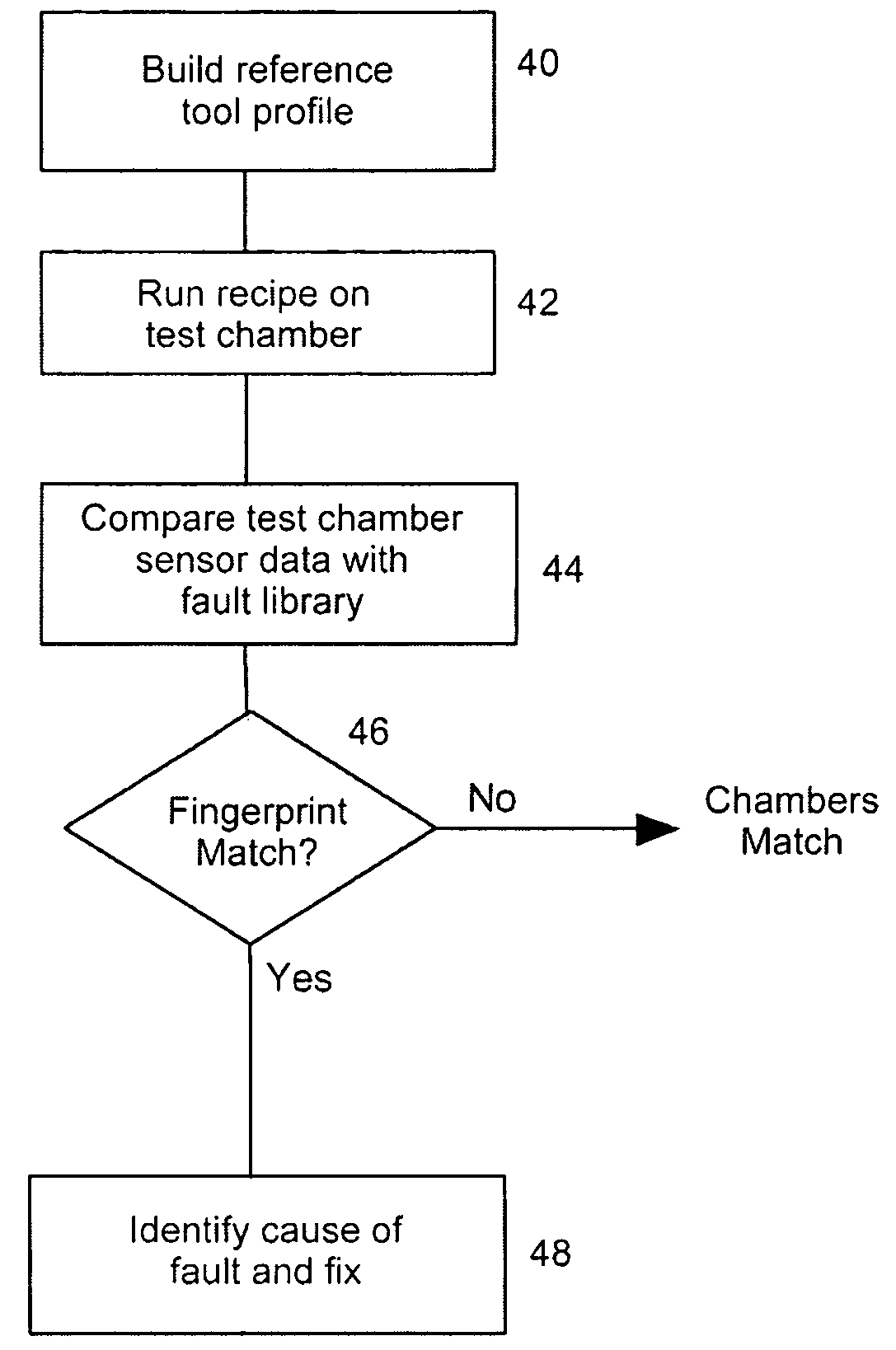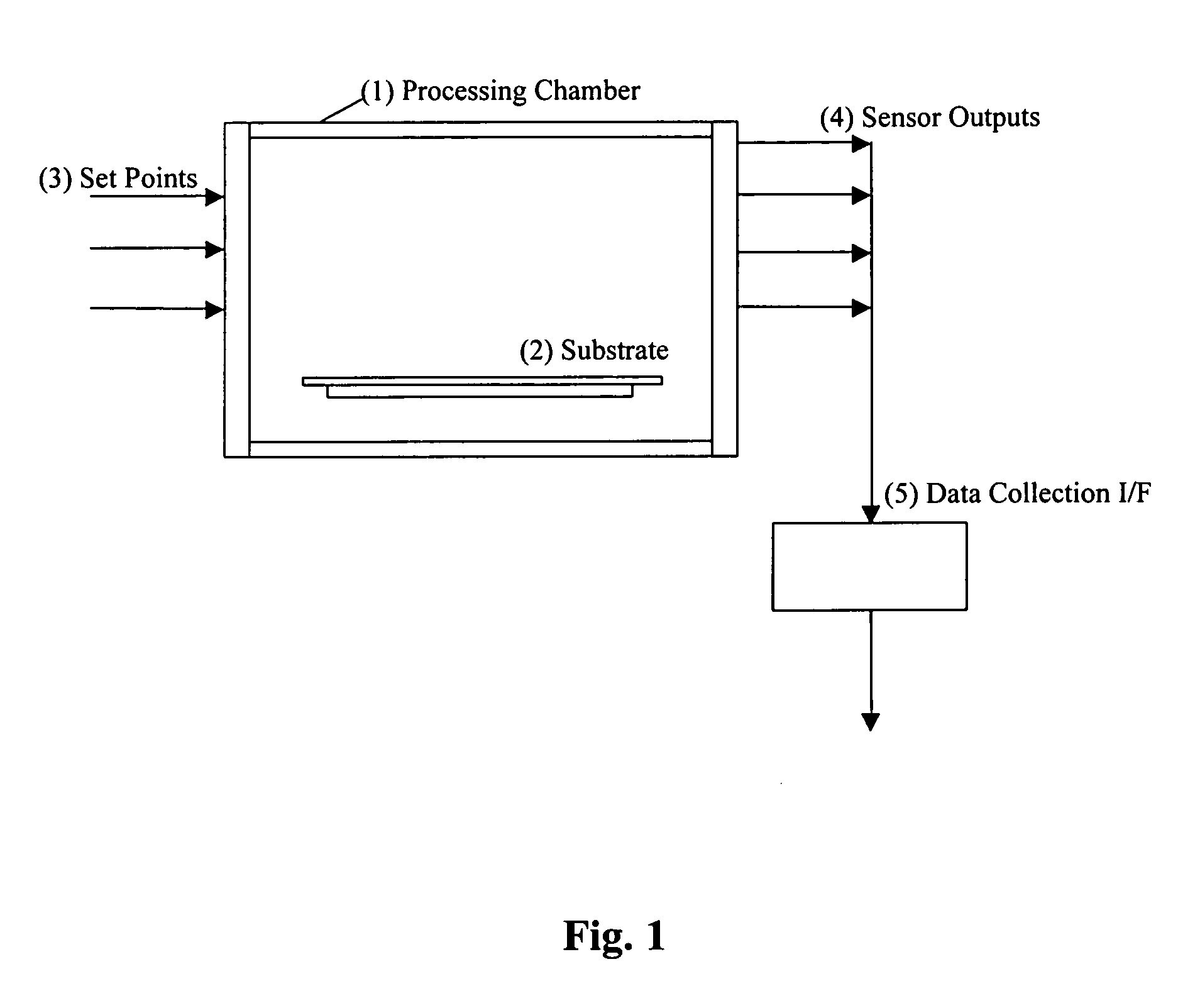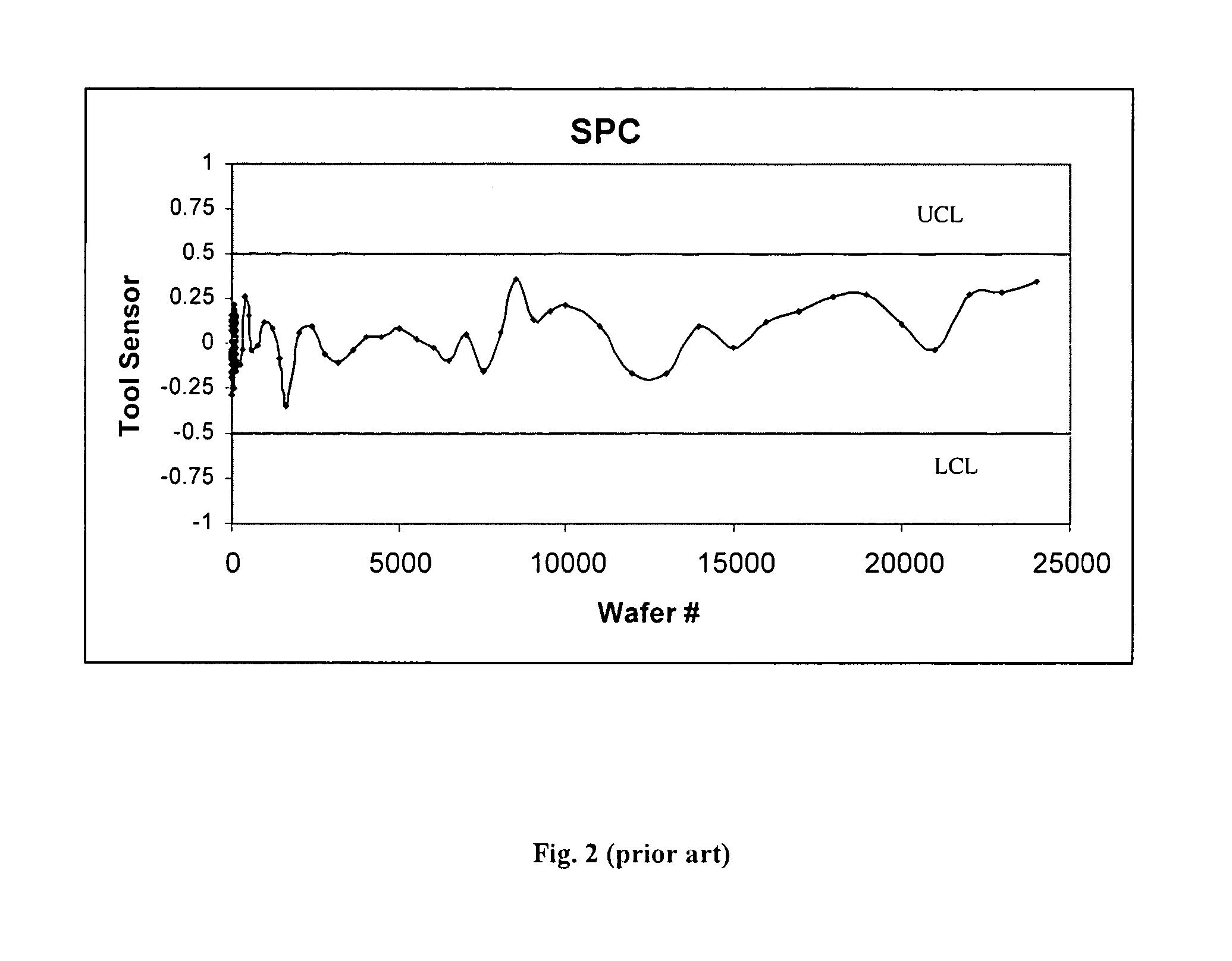Method for process control of semiconductor manufacturing equipment
a manufacturing equipment and process control technology, applied in the direction of electric programme control, semiconductor/solid-state device testing/measurement, instruments, etc., can solve the problems of compromising all devices, fab) can require several hundred highly complex tools, and faults can and do occur on these manufacturing tools
- Summary
- Abstract
- Description
- Claims
- Application Information
AI Technical Summary
Problems solved by technology
Method used
Image
Examples
Embodiment Construction
[0047]In a first embodiment of the invention, a method for process control of semiconductor manufacturing equipment comprises first determining a tool profile for each tool on which the method is to be applied. In this embodiment, the tool profile is constructed from a plurality of tool sensor data. The sensor data can be multidimensional data from a single sensor or data from a set of sensors but in either case the data must be sensitive to tool-state and process-state changes. The important criterion is that the sensor data has sufficient dimensions to permit a plurality of different fingerprints to be defined for a respective plurality of different fault conditions. As used herein, a “fingerprint” is a set of sensor data which defines a particular state of the equipment—thus a fault fingerprint means a set of sensor data defining the state of the equipment in a fault condition.
[0048]FIG. 5 shows a portion of a typical tool profile for a plasma chamber running a particular etch re...
PUM
| Property | Measurement | Unit |
|---|---|---|
| gate lengths | aaaaa | aaaaa |
| Euclidean distance | aaaaa | aaaaa |
| semiconductor | aaaaa | aaaaa |
Abstract
Description
Claims
Application Information
 Login to View More
Login to View More - R&D
- Intellectual Property
- Life Sciences
- Materials
- Tech Scout
- Unparalleled Data Quality
- Higher Quality Content
- 60% Fewer Hallucinations
Browse by: Latest US Patents, China's latest patents, Technical Efficacy Thesaurus, Application Domain, Technology Topic, Popular Technical Reports.
© 2025 PatSnap. All rights reserved.Legal|Privacy policy|Modern Slavery Act Transparency Statement|Sitemap|About US| Contact US: help@patsnap.com



